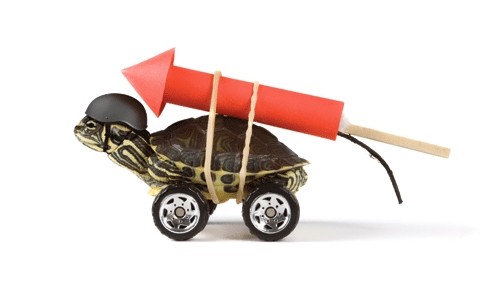
In my recent travels I’ve run into situations where mis-handled carbines slowed down an otherwise speedily-run match. Sometimes it’s a prop gun used in official ASI courses like “Carbine Failure” and other times it’s a dedicated carbine-only match. In either case, the carbine requires special care.
Prop Guns
When the ASI founders offered to help run the Hand Sized Handgun championship, we focused our efforts on the prop gun stage.
We’ve got two major suggestions:
We’ve got two major suggestions:
- Assign a “prop gun handler” that will deal with all the unloading/reloading/stowage/reloading/re-prepping tasks. Just having a designated handler will increase your “throughput” tremendously, and adds an extra layer of gun handling safety.
- Don’t rely on the shooter to understand how your prop gun operates. If possible, put an identical carbine in the safety area so shooters can get a chance to handle it at their own pace. If a staged back-up gun isn’t an option, encourage your prop gun handler to explain the gun to people between shooters/stages as time allows.
Carbine Match Pro
Different matches handle carbines different ways. Some require safety flags, some have ready tables, others use a gun case like a holster. Carbines are still new in ASI, so the “process” for handling them is in flux.
Jay Grob runs the Carbine match for Heritage Shooting Center in Frederick, Maryland. “When we first started, Carbine took forever,” Grob says. “We’d have 11 shooters and struggle to get done in two to three hours.”
Today, the Heritage match has their “flow” down to a science, having done away with the major time-sinks of the carbine (casing/un-casing, electronic sights, and handling mags).
Three Secrets To Carbine “Flow”
- Ready Table: When shooters arrive at the match, all the carbines get uncased and laid on one of two long benches along the wall. The carbines
- must point directly at the wall (which is bulletproof), and must have a chamber flag inserted.
- Dots On: When the carbine is uncased, the shooter activates any electronic sights they might have, and leaves them on for the duration of the match. According to Grob, this one thing is a HUGE time-saver, and has some real-world lessons as well.
- Ready Area: Once the shooters lay their carbines down, they carry the rest of their gear back uprange to some benches where their gear will remain for the duration. Doing this keeps the shooter from carrying their (big, awkward) gun case to the firing line and fishing around in it to find their magazines. When the shooter is called, they walk forward to the side table with a loaded magazine or two (only) stuck in their pockets. They pick up the carbine, point it skyward, and walk directly to the firing line – no muss, no fuss, no time wasted.
Heritage has a corporate focus on the home-defense and concealed-carry customer, which dovetails perfectly with the skill level required to shoot ASI. Additionally, it gives the local crew an opportunity to talk about real-life situations that aren’t part of ASI.
As Grob says, “If you’re in a home defense situation, you don’t have time to turn your sights on — it’s go time. Using a ready table where you leave your sights on reinforces that issue.”

